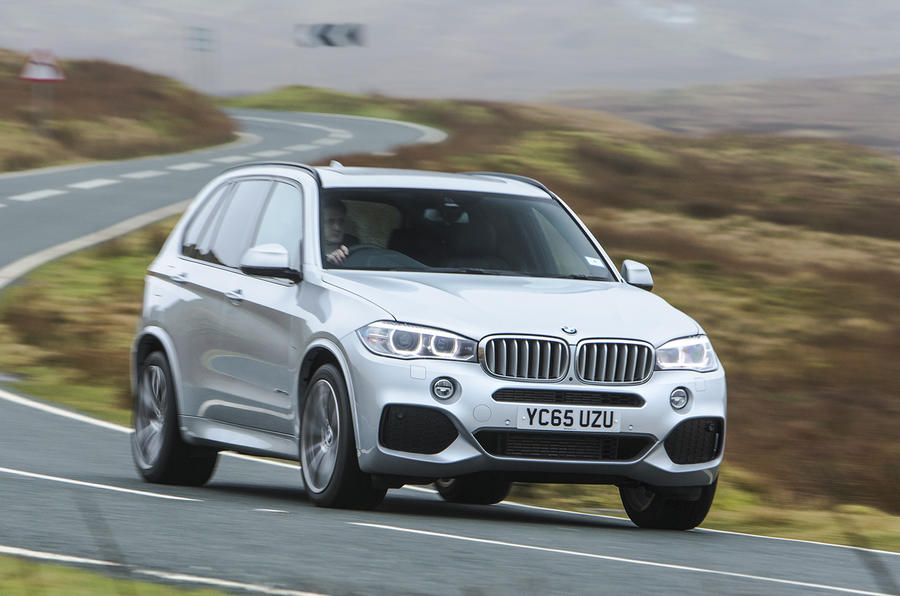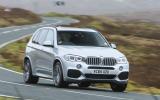What is it?
Hybrids can be a great tax wheeze if you're a company car driver. Take this new BMW X5 xDrive40e as an example; if you buy one instead of a diesel X5 30d, you’ll more than halve your company car tax bill, to just 13%.
This is a plug-in hybrid, too, so after a three- to four-hour charge - depending on whether you’re using a domestic plug or a proper charging station – the 9.0kWh battery will power the motor for up to 19 miles of silent running. That makes the school run considerably cheaper.
What’s the catch? Well, BMW claims up to 85.6mpg for the 40e, but only someone wearing a lab coat with an esoteric machine that goes ‘ping’ will register that figure. Also, batteries are heavy and can blunt the driving experience, and they create packaging issues – the 40e has a smaller, 500-litre, boot and only five seats rather than the option of seven.
So is it worth paying the £2500 premium for the 40e, or should you play it safe and go for the 30d instead?
What's it like?
Switch the ignition on and the 40e defaults to its Auto eDrive mode, which tries to use the electric motor as much as possible and engages the 2.0-litre petrol only when necessary. It does the usual electric thing of providing plenty of instant torque, while whisking you along in uncanny silence as you amble around town. You have to be judicious with the accelerator pedal, though, and keep your speed below 44mph, otherwise the engine will fire.
When it does, it cuts in smoothly and makes the 40e usefully quick, matching the 30d for outright acceleration and feeling livelier thanks to the engine’s eagerness to rev. It hasn’t got quite as much torque as the 30d, but the dual power sources help spread what it has over a wider range, and with more top-end power you don’t spend long in the danger zone when overtaking.
If you’ve got enough charge you can switch it to the Max eDrive mode, which runs on electric power up to 75mph. But if you do that speed you’ll get nowhere near the supposed 19-mile range - and, surprise surprise, 85.6mpg combined isn’t doable, either; on our trip to North Wales we couldn’t get much more than 25mpg, even when we were being sensible.
On stunning Welsh roads the 40e served up some typical X5 dynamic extremes. Our M Sport model on adaptive dampers offered great body control for a 2.3-ton car, happily resisting lateral g-forces and soaking up mid-corner bumps.
Unfortunately, the steering’s poor weighting and the front wheels' predilection to tramlining engenders distrust, which, combined with the grabby regenerative effect from the brakes, makes you disinclined to use all of the chassis' strengths.
It’s a tale of two halves inside, too. The cabin’s superbly made and hard to fault ergonomically, but at times the ride gets quite busy, while wind and road noise at speed diminish its effectiveness to cosset over long distances.
Should I buy one?
You need to do the sums to see if the 40e will give you any payback over a 30d but basically, if you’re not a company car user and spend most of the time on the motorway, chances are it’s not for you.
As a package, the X5 40e is great in many ways, but its weaknesses prevent it from being the automatic choice. The more practical Volvo XC90 T8 is certainly worth considering as well, and if you’re in the market for either, look out for our forthcoming group test when we'll pronounce definitively which is best.





















Join the debate
Add your comment
Somebody somewhere is having a laugh
awful
That to me is poor - but then it is a 2.0 turbo petrol with a 2.3 ton car. 3.0d would be my choice personally in a car such as this.
no brainer